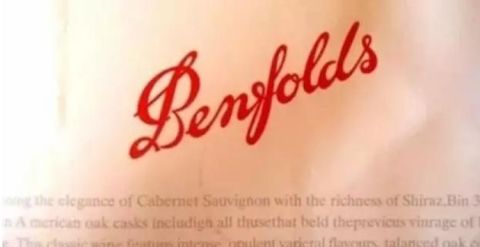Jancis wonders why Americans don't seem to like Australian wine as much as she does. A version of this article is published by the Financial Times. A new importer of fine Australian wine into the US adds her own thoughts below. Above: top Australian winemakers at Lake Tahoe in 2018.
It’s been a year since I devoted an article to Australia, which is strange since it’s the country that sends more wine to those of us in the UK than any other.
Adelaide to Southampton and Bristol are the dominant shipping routes, flexitank the dominant shipping format. Accolade, the company that sends more Australian wine to Britain than any other, sends 93% of it in bulk. This makes huge sense in terms of carbon footprint, but it does suggest, correctly, that the British like their Australian wine cheap. (Mind you, they like wine in general to be budget-priced; the average retail price of a bottle of wine sold in the UK is just £6.16, with duty and VAT accounting for £3.26 of that.)
In the US, however, after an all-too-brief love affair with more expensive Australian wine in the early years of this century, American wine buyers are still less than rapturous about Australia, even though a third of the Australian government’s AU$50 million wine export support programme has been targeted at the US market.
The generic body Wine Australia has pulled out all the stops in order to expose influential North Americans in wine to the best that the country can offer. Between 2016 and the onset of the pandemic about 100 of them were flown Down Under and treated to tailor-made wine tours. In each of 2018 and 2019, 100 key sommeliers, media and trade professionals were invited to lavish, four-day, fine Oz wine boot camps in the California resort Lake Tahoe. Author of The Wine Bible Karen MacNeil describes the one she attended as ‘quite emotional and very special’, getting so many people together in isolation and providing access to so many leading wine personalities and their stories.
But despite all this, the US still imports far less Australian wine than the UK by volume, even if almost as much by value. The amount of Australian wine shipped to the US fell by 3% last year. Why are Americans immune to the charms of Aussie wine? Is it because it is too like California wine? (Though the same could be said of Argentina, which has enjoyed considerable success.) Has the runaway success of the sweet, mass-market Australian brand Yellow Tail soured perceptions forever? Is it because of a lack of Australian restaurants in the US to act as useful discovery points?
So relatively small is their domestic market that Australian wine producers have to export to survive, and their great saviour recently has been the success of highly priced Australian reds in China. Last year mainland China accounted for 31% of the value of Australian wine exports, nearly twice as much as the value of exports to the UK (17%) and US (16%). Hong Kong added another 5%.
But the Chinese dream – heavily influenced by Treasury Wine Estates’ key brand Penfolds, so strong in China that knock-off brands such as Benfolds and Panfaids have proliferated, all using the same distinctive font as Penfolds – is well and truly over. Sino-Australian relations have soured and such implacably punitive import duties were imposed by the Chinese on Australian wine last November that exports to China fell by 98% last December.
As an admirer of Australia’s best wines for exactly 40 years, I have been concerned about what will happen to all the wine that would have been sent to China. The California 2020 harvest was severely affected by the wildfires there last October so perhaps California’s loss might be Australia’s gain to a certain extent, I thought – although until the fires, California had a considerable surplus of wine anyway.
My immediate reaction on hearing about the terrible frosts in France and Italy last month that are likely to shrink the European 2021 harvest this September, and the unprecedentedly short 2021 crop in New Zealand because of frost there and unsettled weather during flowering, was that Australian wine might benefit.
But, just like virtually everywhere on the planet, Australia has been beset by meteorological hazards (fires, floods, with both the 2020 and 2019 crops being unusually small), so the China-related surplus is less of a blow than it might have been – in volume terms anyway. The 120 million litres of wine that would have gone to China this year would have been worth AU$1.1 billion and it seems unlikely any other country is going to pay that much for it. It was typically extravagantly packaged, full-bodied red, so it’s hardly going to fill the gap left by a shortage of Marlborough Sauvignon Blanc.
The 2021 Australian wine harvest just gathered, on the other hand, was almost perfect in South Australia, the key wine state, so this could be a fine time to revise perceptions of Australian wine. The Australians’ problem is that they have been so successful at filling lower supermarket shelves with inexpensive, reliable wine that many non-Australian wine drinkers have difficulty acknowledging that Australia produces fine wine too.
The screwcaps that are virtually mandatory within Australia may be a deterrent in some markets (most Australian producers abandoned their devotion to the technical perfection of a screwcap and switched back to natural corks for wines destined for China). And the fact that, with the notable exception of Penfolds’ top-of-the-line Grange, Australian wine barely features in the fine-wine trade, may not be helpful for the image of Australian wine either.
Australian auctioneers Langton’s have created a lively market for Australia’s most collectible wines but that is a phenomenon strictly within Australia. The international trading exchange Liv-ex reports that even including Penfolds Grange, Australia accounts for well under 2% of their trades.
I was recently sent a dozen samples of 2015 Cabernet Sauvignon-based wines, seven of them Australian and the rest their international counterparts. At least six of these Australians were superb by any measure and I suspect many a fan of red bordeaux would be surprised and delighted by them. (They reminded me rather of Napa Cabs from the 1970s – high praise.)
Shiraz dominates Australian wine exports by a country mile and, while traditionally Australian Shiraz has been big – perhaps too big and beefy for the current trend towards freshness – there is a host of new-wave producers in Australia who, like their counterparts in California, see alcohol, oak and concentration as enemies.
As for Chardonnay, the country’s third most exported varietal, I’d go out on a limb and say Australia’s better Chardonnays have reached a uniquely perfect balance between accessibility and sophistication.
And I wasn’t even invited to Lake Tahoe.
Some highly recommended Australians
These just happen to be wines I have tasted recently. There are many more.
Whites
Vasse Felix, Filius Chardonnay 2019 Margaret River 12.5%
£9.99 Waitrose Cellar, £14.99 Majestic and many other UK retailers
From $20.99 multiple US retailers
Yalumba, Samuel’s Collection Viognier 2017 Eden Valley 13.5%
£13.95 Wine Direct, £15.99 Taurus Wines and other UK retailers
From $11.95 multiple US retailers
Frankland Estate Riesling 2019 Frankland River 13.5%
£18.95 Winedirect
Pewsey Vale, The Contours Museum Reserve Riesling 2012 Eden Valley 12.5%
$32.99 Pennsylvania Liquor Control Board
Vasse Felix Chardonnay 2018 Margaret River 13%
£25.99 Soho Wine Supply and other UK retailers
Ten Minutes by Tractor, 10X Chardonnay 2019 Mornington Peninsula 13.5%
£28.99 Bancroft Wines and other UK retailers
From $33.99 multiple US retailers
Torbreck, The Steading (white Rhône blend) 2019 Barossa Valley 13%
£31 Honest Grapes, £33.50 Specialist Cellars
Pierro Chardonnay 2019 Margaret River 13.5%
£42.95 Jeroboams
Reds
Wickhams Road Pinot Noir 2020 Gippsland 13%
£18.95 Stone, Vine & Sun
Frankland Estate Shiraz 2017 Frankland River 14.5%
£18.99 Bancroft Wines
Wynns, Black Label Cabernet Sauvignon 2014 Coonawarra 14%
£29 Harvey Nichols, £29.95 Philglas & Swiggot
Swinney Grenache 2019 Frankland River 14%
£29.50 The Great Wine Co
Hoddles Creek, 1er Pinot Noir 2019 Yarra Valley 13.2%
£32.95 Stone, Vine & Sun
Pierro, Reserve Cabernet Sauvignon/Merlot 2016 Margaret River 14%
£41.95 Jeroboams
Mount Mary, Quintet (bordeaux blend) 2015 Yarra Valley 13.5%
£74.68 Berry Bros & Rudd
International stockists on Wine-Searcher.com
Jane Lopes, sommelier and author, of US specialist importer of Australian wines Legend Imports, adds There are the historical reasons that Australia lacks the footing it might otherwise have in the US:
- Australian wine was big in the US in the 1990s and early 2000s, but when Australia had its mining boom and the currency strengthened considerably (became stronger than the US dollar) in the mid 2000s, Australian wine could not withstand the price increases in the US. Demand and interest tanked.
- Because of the global financial crisis consolidation also became rampant in Australia, with some correlative decreases in quality.
- Yellow Tail came in and became the face of Australian wine in the US. People associated Australia with cheap bulk wine, and it became hard to convince people to spend more than $10 on a bottle of it.
And then the modern ones, in my opinion:
- Australia has not done a good job of educating the US about its wines or encouraging the idea that they are worthy of premium price-points. Part of it is that Australians are self-deprecating by nature, and have a hard time saying (or believing) that their wines should be thought of in the ranks of burgundy, bordeaux, etc. I think promoting regionality also plays a huge part in this – Australia has been wary of getting down into the nitty-gritty of the different subregions, vineyards etc, opting instead to stay very general. Margaret River has about the same area under vine as the Médoc, but a single appellation as opposed to the Médoc’s eight, which help guide consumers on quality and style. And having those eight appellations doesn’t do anything to weaken 'brand Médoc' or 'brand Bordeaux', as Australians fear further delineation of Margaret River might do, but rather strengthens it. Looking at whole GIs (Geographical Indications) as a monolith is inhibiting knowledge of the nuance of these wines.
- There also isn’t much knowledge in Australia of how the US market works, and pricing wines appropriately for the three-tier system. As a result, wines sometimes end up too expensive in the market, which puts Australia in the realm of novelty on wine lists/shelves rather than a staple. We believe that Australian wine can be better value than any other country (with overall good labour and decent farming practices, to boot!) and carve out more market share for it that way. I believe this will also allow higher price-points to emerge, when consumers and buyers associate the identity of Australia with good value and know when they pay more for Australia, they will get more. We view it as part of our job as importers to help guide producers through this process and share knowledge about how the US market works.
Explore our articles tagged Australia.


